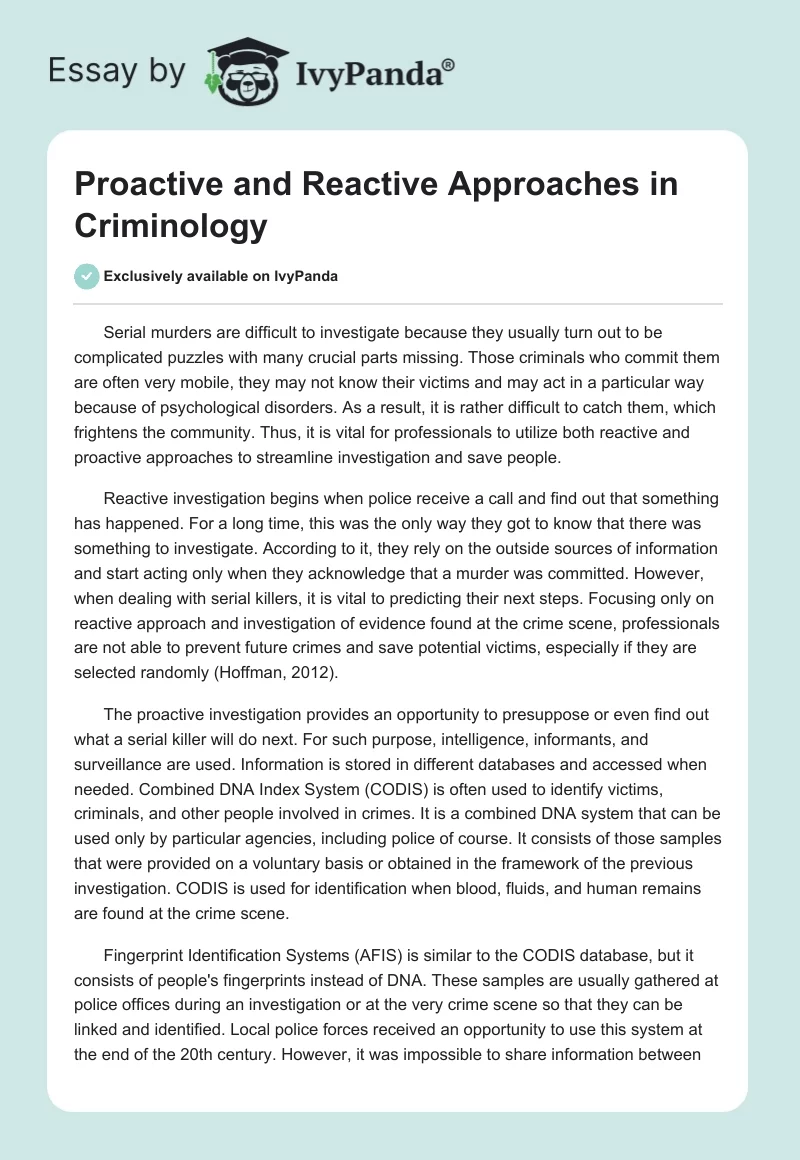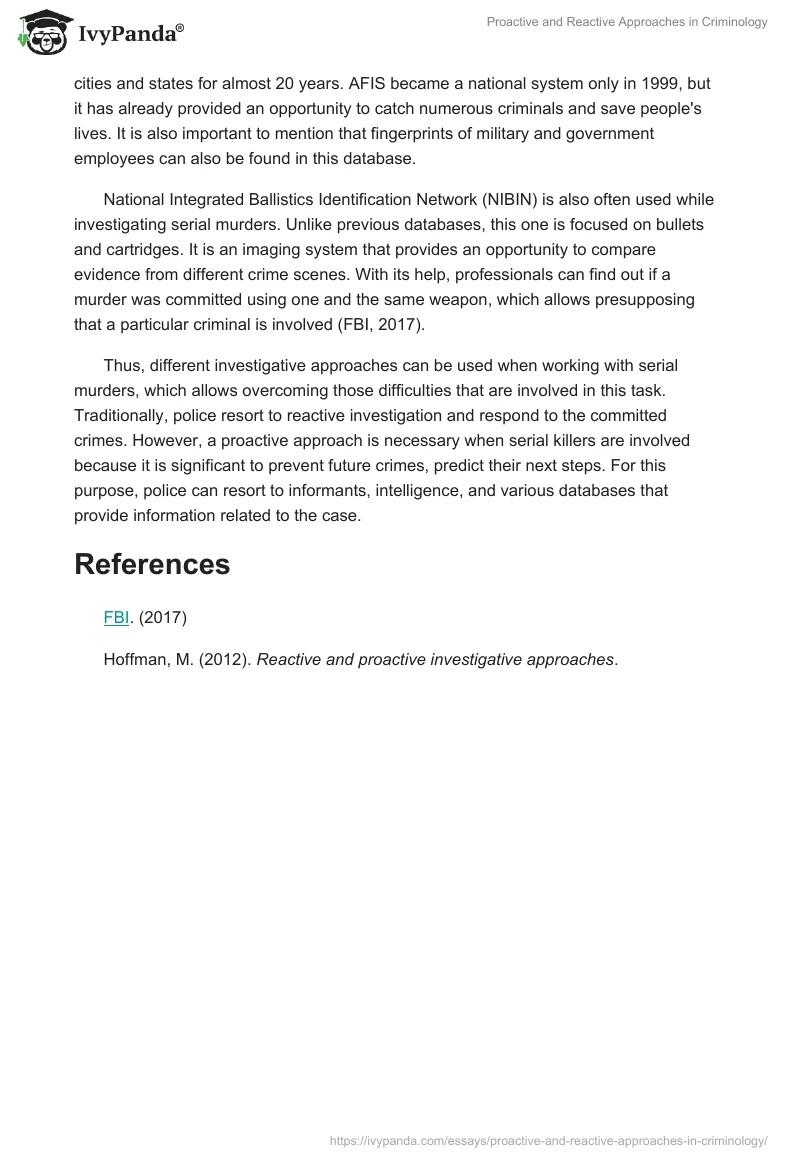Serial murders are difficult to investigate because they usually turn out to be complicated puzzles with many crucial parts missing. Those criminals who commit them are often very mobile, they may not know their victims and may act in a particular way because of psychological disorders. As a result, it is rather difficult to catch them, which frightens the community. Thus, it is vital for professionals to utilize both reactive and proactive approaches to streamline investigation and save people.
Reactive investigation begins when police receive a call and find out that something has happened. For a long time, this was the only way they got to know that there was something to investigate. According to it, they rely on the outside sources of information and start acting only when they acknowledge that a murder was committed. However, when dealing with serial killers, it is vital to predicting their next steps. Focusing only on reactive approach and investigation of evidence found at the crime scene, professionals are not able to prevent future crimes and save potential victims, especially if they are selected randomly (Hoffman, 2012).
The proactive investigation provides an opportunity to presuppose or even find out what a serial killer will do next. For such purpose, intelligence, informants, and surveillance are used. Information is stored in different databases and accessed when needed. Combined DNA Index System (CODIS) is often used to identify victims, criminals, and other people involved in crimes. It is a combined DNA system that can be used only by particular agencies, including police of course. It consists of those samples that were provided on a voluntary basis or obtained in the framework of the previous investigation. CODIS is used for identification when blood, fluids, and human remains are found at the crime scene.
Fingerprint Identification Systems (AFIS) is similar to the CODIS database, but it consists of people’s fingerprints instead of DNA. These samples are usually gathered at police offices during an investigation or at the very crime scene so that they can be linked and identified. Local police forces received an opportunity to use this system at the end of the 20th century. However, it was impossible to share information between cities and states for almost 20 years. AFIS became a national system only in 1999, but it has already provided an opportunity to catch numerous criminals and save people’s lives. It is also important to mention that fingerprints of military and government employees can also be found in this database.
National Integrated Ballistics Identification Network (NIBIN) is also often used while investigating serial murders. Unlike previous databases, this one is focused on bullets and cartridges. It is an imaging system that provides an opportunity to compare evidence from different crime scenes. With its help, professionals can find out if a murder was committed using one and the same weapon, which allows presupposing that a particular criminal is involved (FBI, 2017).
Thus, different investigative approaches can be used when working with serial murders, which allows overcoming those difficulties that are involved in this task. Traditionally, police resort to reactive investigation and respond to the committed crimes. However, a proactive approach is necessary when serial killers are involved because it is significant to prevent future crimes, predict their next steps. For this purpose, police can resort to informants, intelligence, and various databases that provide information related to the case.
References
FBI. (2017)
Hoffman, M. (2012). Reactive and proactive investigative approaches.


